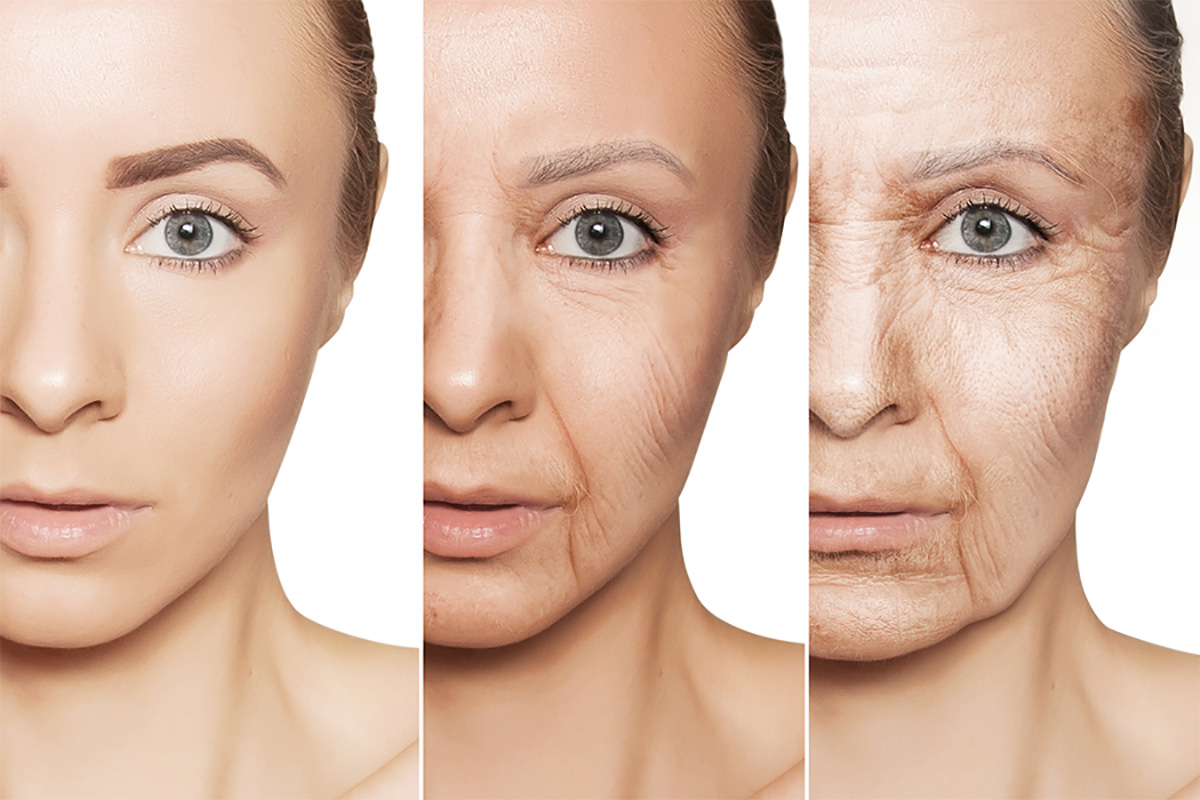When it comes to premature skin aging, you can thank your everyday habits. Many of these habits are attributed to pigmentation, volume loss, and wrinkles. In this article, we’ll examine three of these habits and what you can do about them. Also included are some important tips for getting more rest. Ultimately, you’ll look younger and healthier! So, let’s get started!
Extrinsic factors
While many of the external factors we encounter are completely outside our control, we can still make some lifestyle changes to slow down the process. If you think that you are a victim of premature skin aging, or if you have noticed signs of it, contact your primary care physician or a dermatologist to find out what you can do. You may also be surprised to know that some factors are entirely preventable, such as excessive sun exposure.
The sun’s UV rays are one of the leading causes of premature skin aging, contributing to up to 80% of facial wrinkling. Exposure to the sun causes the stratum corneum (the outermost layer of the epidermis) to thicken due to the failure of the corneocyte desmosomes. UV irradiation also causes the level of a protein called corneocyte involucrin to increase.
Another contributing factor to premature skin aging is pollution. Exposure to various pollutants create free radicals. Known as ozone pollutants, they deplete antioxidants and oxidative stress. Furthermore, they cause inflammation. One solution to the problem is malachite extract, which can inhibit the effects of ozones on skin. It may help you look younger than you really are!
Intrinsic factors
The human integument is a complex, dynamic organ that covers about one-sixth of the body. It serves as a barrier between the environment inside the body and the environment outside. Despite its vital role as a barrier, the skin also has numerous functions, including sensory perception, thermoregulation, mechanical protection, and immune responsiveness. Because of its vulnerability to cutaneous infections and autoimmune disorders, it is important to consider the role of skin aging in the human body.
There are two distinct types of aging: extrinsic aging and intrinsic aging. Extrinsic aging involves external factors, such as lifestyle and environmental factors. The environment, such as UV exposure, pollutants, and sun damage, affect the skin’s structural proteins, resulting in premature aging. Consequently, environmental stressors play a significant role in both types of aging.
While the effects of environmental exposure on human skin are poorly understood, there are a few potential determinants that are known to affect skin health. For example, air pollution is thought to alter facial aging signs in Chinese women. In addition, genetic factors can affect skin health. For this reason, it is essential for dermatologists to assess the effects of comorbidities before recommending a course of action for a patient.
Stress
Chronic stress can accelerate the aging process. Several studies have shown a connection between stress and skin aging. Chronic stress has many negative effects, including dryness, wrinkles, and acne. However, the exact mechanisms behind chronic stress are not clear. There are some behaviors that can be changed to reduce stress levels and improve the skin’s appearance. If you’re constantly stressed out, it’s best to talk to a friend or family member about your problems.
According to a study published in the National Institutes of Health, chronic stress leads to inflammation in the body and excess oil production in the skin. Both of these factors contribute to accelerated skin aging. The study also suggests that prolonged exposure to stressful environments may result in wrinkles. Even worse, chronic stress can also make skin look older by 3.5 years. So, what should you do to prevent premature skin aging?
Chronic stress is a leading cause of wrinkles. The primary stress hormone, cortisol, breaks down collagen in the skin. When people are stressed, their skin cells are unable to naturally rebuild collagen and elastin. This loss of collagen and elastin is the primary cause of wrinkles. This extra cortisol in the skin could be directly linked to the aging process and the signs of wrinkles.
Lack of sleep
The benefits of getting a full night of sleep are many. Not only does a restful night’s sleep boost your memory, it also helps your skin recover from sun exposure. It is no secret that our skin is one of our largest organs. Lack of sleep causes your skin to lose elasticity, lose pigmentation, and show signs of aging sooner than usual. According to the American Academy of Sleep Medicine, less than seven hours of sleep per night could be contributing to premature skin aging.
Insufficient sleep disrupts the normal balancing act between hormones in our bodies. When our bodies don’t get enough rest, they produce excess cortisol. Excess cortisol lingers in the bloodstream and contributes to inflammation. Lack of sleep also decreases DHEA, the ‘youth hormone’, which helps our skin bounce back from free radical damage.
The study was funded by the Estee Lauder Companies. Its authors include White P, Koo B, Matsui MS, Yarosh D, Cooper KD, Baron ED, and Fthenakis C. Although the findings are preliminary, the results are compelling. Inadequate sleep decreases skin’s ability to recover from sun exposure and increases signs of aging. Lack of sleep can even increase the appearance of wrinkles.
Alcohol
There are several ways to combat the effects of alcohol on your skin. Drinking too much alcohol reduces your liver’s ability to detoxify your body. This can impact your skin, making it appear older than it really is. In addition, excessive drinking can cause a hangover in the morning. Even if you only drink one drink a day, try drinking a nonalcoholic beverage as often as possible to avoid alcohol’s damaging effects.
Over consumption of alcohol can cause your skin to appear red. Alcohol dilates blood vessels, causing redness and flushing. Overuse of alcohol can result in the formation of spider veins and broken capillaries. Although these changes can be temporary, they can lead to permanent skin aging. Listed below are some signs of aging caused by alcohol. Luckily, many of these signs can be reversed with treatment.
Those who drink excessively have a higher risk of developing signs of aging. For example, people who drink alcohol frequently have a higher risk of developing arcus corneae, a gray ring in the eye that often appears in old age. Similarly, women who consume more than 28 drinks a week are at a higher risk of developing this condition. Because alcohol deprives the body of the nutrients it needs to rebuild, alcohol can speed up the aging process.
Lack of hydration
Dehydration is known to impair the reproduction cycle of skin cells, making the skin feel tight and congested. This makes the skin more prone to cracking and irritation. Deficiency of water can contribute to premature skin aging, particularly if skin is dehydrated for long periods of time. Lack of water may also make skin appear dry and chapped. The lack of water in the skin may accentuate fine lines and wrinkles.
Alcohol and caffeine are two common dehydrating agents, and they can cause premature skin aging in some people. Drinking these substances in moderation can help prevent dehydration. However, excessive consumption can lead to hypertension, a condition that puts stress on the heart and circulatory systems. Additionally, consuming these substances may decrease the blood supply to the skin. To combat the signs of dehydration, it’s important to drink eight glasses of water per day.
Another way to prevent premature skin aging is to eat plenty of fresh fruits and vegetables. Avoid sugary food and refined carbohydrates, which can damage the skin and speed up aging. And don’t drink alcohol, as it dries the skin. Additionally, moderate exercise can improve circulation and boost the immune system, which will improve the appearance of the skin. The best way to maintain the youthful appearance of your skin is by using SPF products, applying sunscreen, and sticking to a daily skin care regimen.
Smoking
It’s well documented that smoking is associated with premature aging. But is smoking really the main culprit? In the current scientific debate, the answer is not yet clear. A new study suggests that smoking may contribute to early skin aging. In fact, the effects of smoking can be seen in as little as two years. The authors point to some evidence to support their findings. To help us understand the cause of this problem, we will explore how smoking affects skin.
Tobacco smoke is highly inflammatory, and contains thousands of substances that damage skin. Besides its detrimental effects on the body, smoking is also associated with several dermatological diseases, including premature skin aging. Moreover, smoking is associated with delayed wound healing, increased infections, and a host of skin disorders. Among these, inflammatory skin conditions like acne and psoriasis are more severe in smokers, making it harder to cure them.
As a smoker, your skin can develop nasolabial folds, or the lines that extend from the bottom of the nose to the corners of the mouth. This skin condition is not harmful, but it’s uncomfortable and has a negative effect on appearance. The number of smokers you’re exposed to will determine your risk of developing this condition. However, a number of other factors may also contribute to the aging process.

